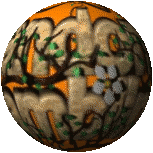I have always read … mostly factual – and so, it feels that I have always known about the wonders of cocoa. Dark, dark, chocolate bars are worth consuming as they are a food source that is full of nourishment. It is not worth having light-weight chocolate as it is just full of sugar but the heady, sultry black chocolate bars enrich the body with life-giving minerals for health and strength.
Dark, dark, chocolate bars contain magnesium, which helps with regular movement of the bowels; iron, which enriches the red blood cells to carry oxygen throughout the body; phosphorous, which not only helps to strengthen bones, teeth, cells and membranes but also helps to destroy feelings of anxiety, stress, general weakness and irritability; copper, which is also a multi-use mineral, it helps maintain hair colour, skin youthfulness, it maintains bones, heart and brain tissue, production of red blood cells, basic energy, fights infections, skin healing; calcium, which helps to strengthen bones and teeth, acts as natural pain relief, relaxes muscles, (people who are short of calcium are apt to be bad tempered, get irritated and sometimes become violent); Zinc, which is surely the saviour of mankind as it has the propensity of destroying viruses and keeping the body safe, it also helps the nurturing of the white warrior cells or T cells in the blood stream, it is essential for the healing of wounds … So never feel guilty about eating the dark, black, chocolate that holds so much abundance of goodness. It is best to try and eat chocolate that is at least 70% cocoa solids and with little sugar and never any sweetener. Munch on one or two squares each day and enjoy this nourishing food.

Dark, dark chocolate … is surely not only good for the body but good for the soul
Little extra titbits about dark, dark, black chocolate:
Firstly, chocolate is produced from the cocoa bean (cacao, kakaw or cacaua), which is a herb. The cocoa bean and in fact dark, dark, black chocolate contains vitamin P. This is the magic vitamin that many will refer to using the term flavonoid. There are approximately 5000 flavonoids to be found in natural fresh foods. Flavonoids are known for their antioxidant properties. They are widely believed to give us longevity (long life), they protect us from free radicals (these are the little electrons that storm through our bodies pillaging our cells like pirates, they damage our organs, bones, joints, cartilage, in fact wherever there are cells in the body free radicals travel and attack). By eating foods that contain antioxidants we equip our bodies with armies that defend, protect and enable us to mend and rebuild ourselves. So besides dark, dark, black chocolate keep an army within by eating the best possible nourishing foods that you can: fresh vegetables, fruits, meat, fish, seeds and avoid those that inhibit health such as processed, manufactured foods, sugars and starches.





























































